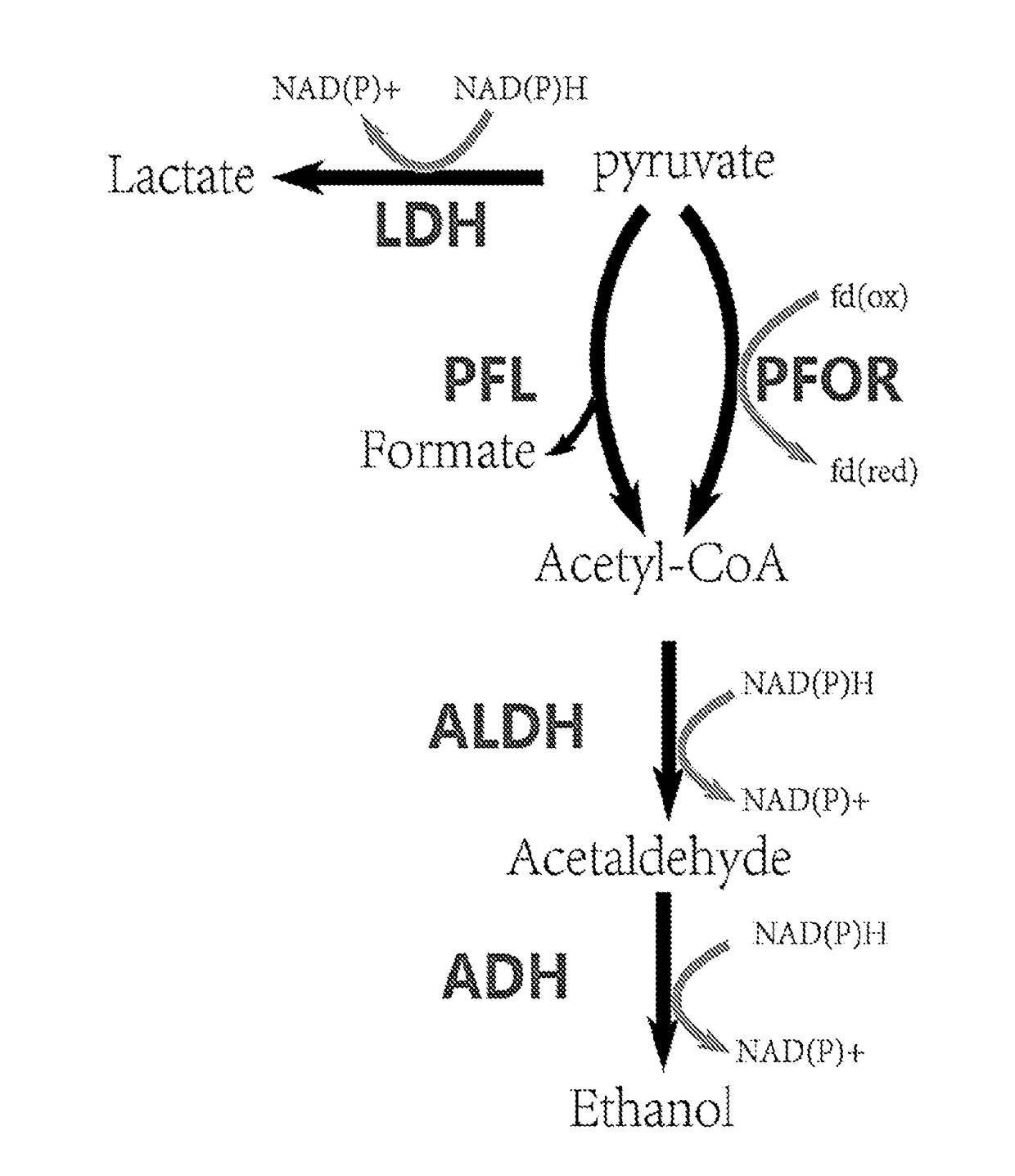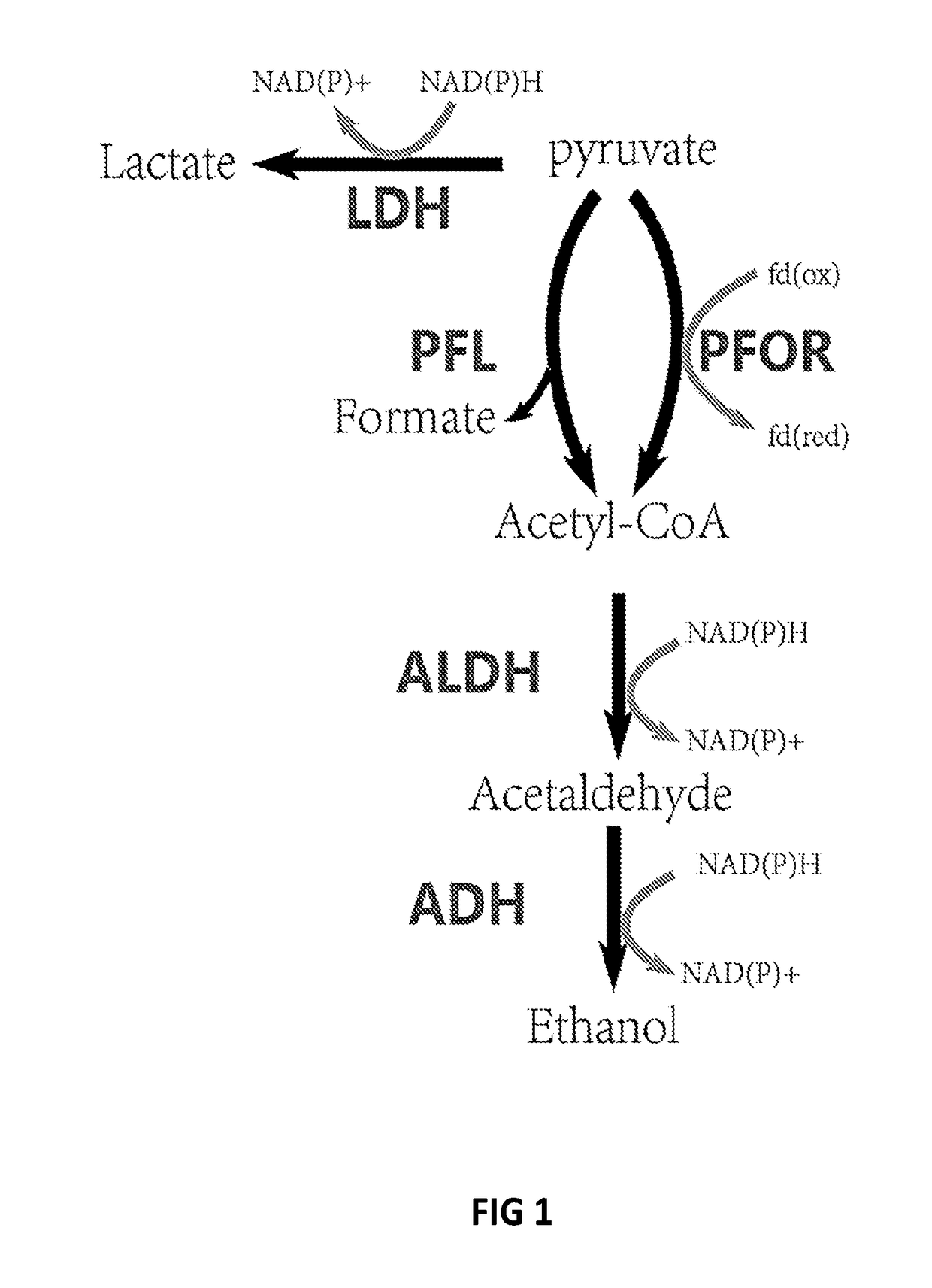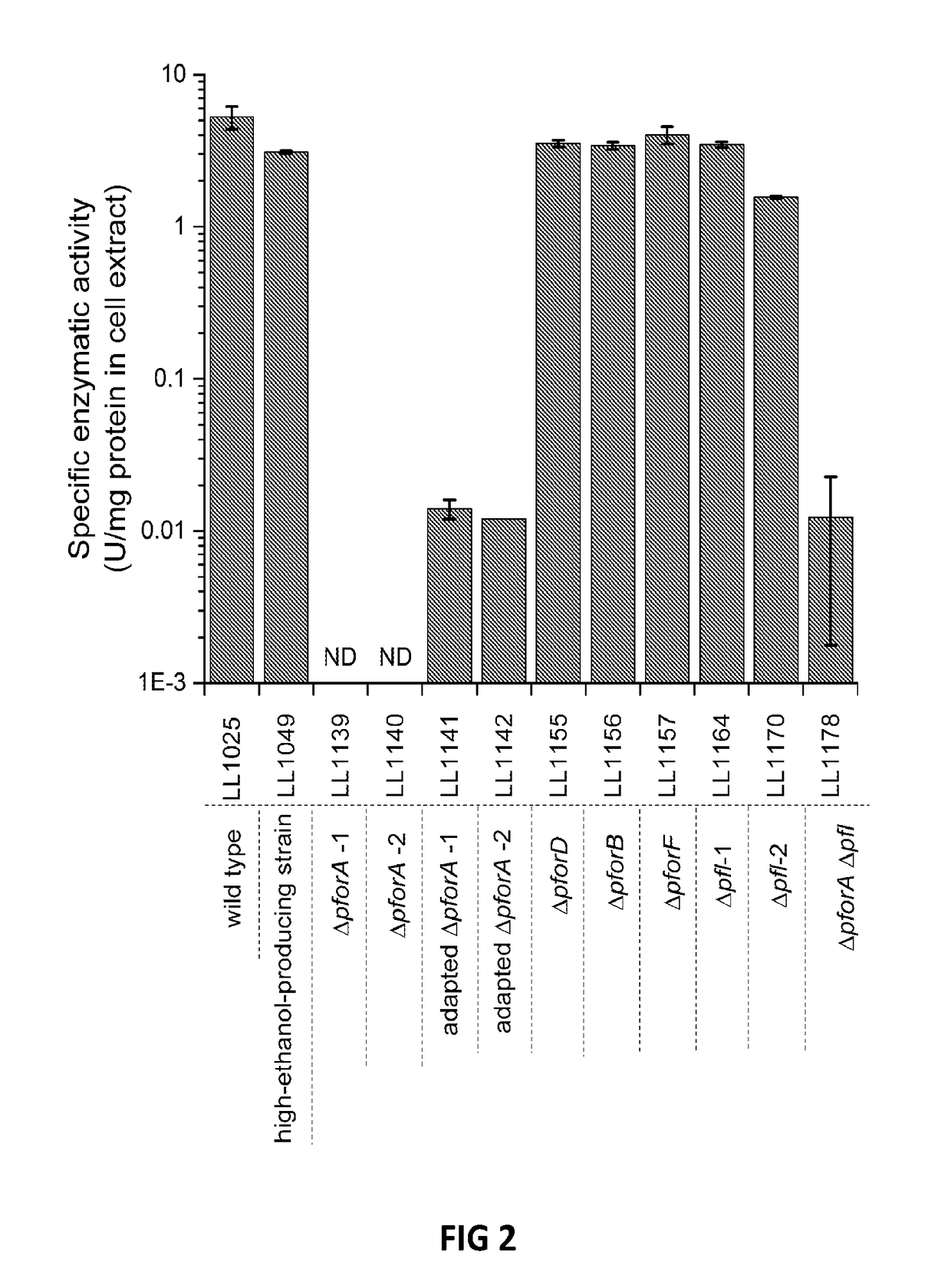Thermophilic microorganisms for conversion of lignocellulosic biomass to ethanol
a technology of lignocellulosic biomass and microorganisms, which is applied in the field of thermophilic microorganisms for conversion of lignocellulosic biomass to ethanol, can solve the problems of low yield, unknown or poorly characterized genes involved in the pathway for pyruvate-to-ethanol conversion in i>t. saccharolyticum /i>typically produces ethanol at relatively low yield, and achieves high yield
- Summary
- Abstract
- Description
- Claims
- Application Information
AI Technical Summary
Benefits of technology
Problems solved by technology
Method used
Image
Examples
example 1
Role of Pyruvate Ferredoxin Oxidoreductase and Pyruvate Formate-Lyase in Thermoanaerobacterium saccharolyticum
[0070]Thermoanaerobacterium saccharolyticum is a thermophilic, anaerobic bacterium able to ferment hemicellulose but not cellulose. Wild-type strains produce ethanol, acetic acid and under some conditions lactic acid as the main fermentation products, but engineered strains produce ethanol at near-theoretical yields and titer of 70 g / l. Hemicellulose-utilizing thermophiles such as T. saccharolyticum commonly accompany cellulolytic microbes in natural environments. The pathway by which engineered strains of T. saccharolyticum produce ethanol may provide examples of high-yield ethanol production involving pyruvate conversion to acetyl-CoA via pyruvate ferredoxin oxidoreductase (PFOR) (FIG. 1), and because of the potential to reproduce this pathway or important features thereof in other thermophiles.
[0071]In this Example, genes and enzymes responsible for conversion of pyruvat...
example 2
Cofactor Specificity of the Bifunctional Alcohol and Aldehyde Dehydrogenase (AdhE) in Wild-Type and Mutants of Clostridium thermocellum and Thermoanaerobacterium saccharolyticum
[0143]In microorganisms, fermentation of pyruvate to ethanol can proceed either with or without acetyl-CoA as an intermediate. In yeasts and Zymomonas mobilis, pyruvate is decarboxylated directly to acetaldehyde, which is then reduced to ethanol (11). In many other organisms, pyruvate is oxidatively decarboxylated to acetyl-CoA, which is reduced to acetaldehyde, which is further reduced to ethanol. This two-step conversion of acetyl-CoA to ethanol is catalyzed by one protein: a bifunctional alcohol dehydrogenase AdhE. AdhE consists of a C-terminal alcohol dehydrogenase (ADH) domain and an N-terminal aldehyde dehydrogenase (ALDH) domain: the ADH domain is usually part of the iron-containing ADH superfamily (FIG. 5) (12). AdhE is present in a variety of mesophilic and thermophilic anaerobic bacteria capable of...
example 3
Deletion of nfnAB in Thermoanaerobacterium saccharolyticum and its Effect on Metabolism
[0187]In this Example, experiments were performed to (1) determine the physiological role of the NfnAB complex in T. saccharolyticum and (2) whether this role change in strains that have been engineered for high-yield ethanol production.
[0188]To answer these questions, targeted gene deletion, heterologous gene expression, biochemical assays, and fermentation product analysis were used to understand the role of the NfnAB complex in anaerobic saccharolytic metabolism.
[0189]Materials and methods used in this Example are described below. Chemicals, Strains, and Molecular techniques.
[0190]All chemicals were of molecular grade and obtained from Sigma-Aldrich (St. Louis, Mo., USA) or Fisher Scientific (Pittsburgh, Pa., USA) unless otherwise noted. A complete list of strains and plasmids is given in Table 11. Primers used for construction of plasmids and confirmation of nfnAB manipulations are listed in S...
PUM
| Property | Measurement | Unit |
|---|---|---|
| volume | aaaaa | aaaaa |
| volume | aaaaa | aaaaa |
| temperature | aaaaa | aaaaa |
Abstract
Description
Claims
Application Information
 Login to View More
Login to View More - R&D
- Intellectual Property
- Life Sciences
- Materials
- Tech Scout
- Unparalleled Data Quality
- Higher Quality Content
- 60% Fewer Hallucinations
Browse by: Latest US Patents, China's latest patents, Technical Efficacy Thesaurus, Application Domain, Technology Topic, Popular Technical Reports.
© 2025 PatSnap. All rights reserved.Legal|Privacy policy|Modern Slavery Act Transparency Statement|Sitemap|About US| Contact US: help@patsnap.com



